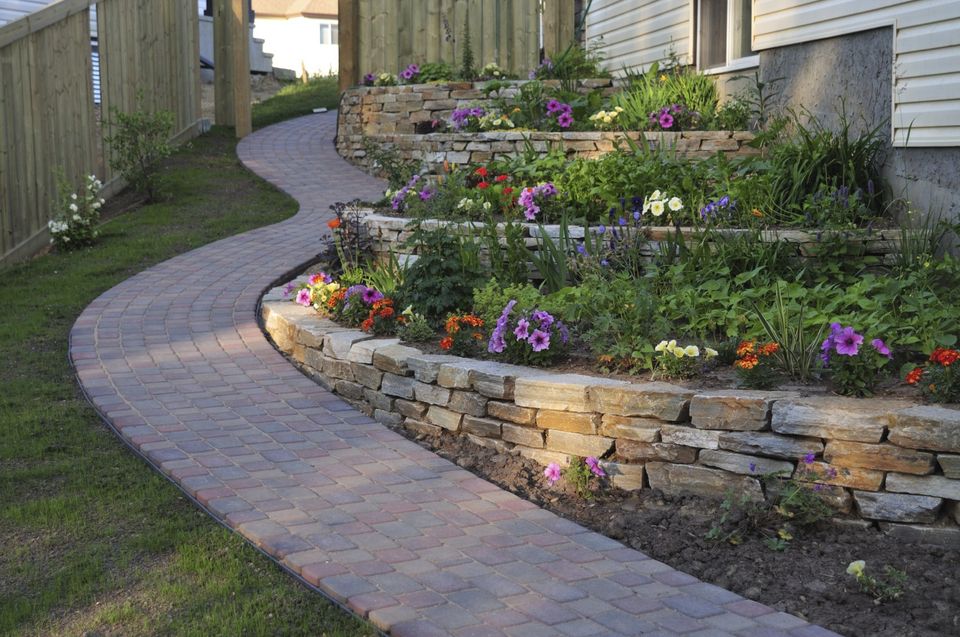Easy Ways to Make Your Front Entrance More Inviting
Do you come home and just feel so uneasy walking to the front door? Feel like it just isn't welcoming enough, or maybe could just do better? Everyone wants their home to feel inviting for their friends and family, no matter if it's a townhome in the city, or a ranch house in the suburbs. And making it feel that way doesn't need to cost an arm and a leg. From HouseLogic, here are 11 ways to make that entry more inviting, on a budget:
1. Grab the shears. The path leading to the door typically should be at least 3 feet wide to allow people to walk next to each other without obstructions to the view of the door and without trip hazards. If you have any plants that are overgrowing into the walkway, make sure to cut them back. If you have any weeks growing in your sidewalk, you can also help prevent them growing back by killing them with some weed spray and then filling the cracks between the cement with Liquid Cement Crack Filler, which you can find at any hardware store near you for under $10 and it lasts a long time.
2. Light it up! Help your guests, and also yourself, to find their way at night. Invest in some solar powered LED lights that you can stick in the ground. They don't require you to wire them, and you don't need to keep buying and replacing batteries. You can find them online with 8 packs for under $60.
3. Get out the paintbrush. Let your creative side out and paint your front door. High gloss colors are especially popular in scenes like London's townhomes. If you're looking for more inspiration, check out our Pinterest board for plenty of ideas.
4. Add a glass door. If your door is already glass but you're looking to add some more privacy, hardware stores as well as online stores carry films that can let in plenty of light while still providing privacy AND character alike. You can even find some that are a stained glass style. Depending on the size of the panel, the style, and even the brand, on average they can cost around $30, and they're removable in case you change your taste.
5. Get new locks. Sometimes something as simple as new hardware can really elevate the look of an entryway. And they can cost as little as $50-60 at your local hardware store.
6. Add a door-knocker. They may be old-school, especially in an era of doorbell cameras, but they always add a touch of class.
7. Plant some evergreens. Boxwoods are a great choice because they take little effort to keep up. They can cost around $25 at hardware stores and garden centers. If you're in a cold climate, though, make sure they pots you keep them in a frost-proof.
8. Go bold with your address. Sometimes your house number may be a little hard to see, depending on the time of day. But if they're generally hard to see all the time, you'll know when your friends or even the pizza delivery guy have trouble finding your house. A quick and easy fix is some stick-on vinyl numbers. They come in different styles and fonts, and they can cost as low as only $4 a number.
9. Update/Add a doromat. If you really want something to say "Welcome" nothing says it more than a doormat - and sometimes literally! They're great for adding more personal touches, especially if you're a humorous soul, and they're perfect for keeping out any residual dirt. You can find them at the hardware store, and even discount stores, for less than $20. If you're willing to splurge just a little, you can also find fancier varieties for under $50.
10. Check your porch lights. Maybe the bulbs just need to be replaced, maybe the fixture needs cleaning, or maybe it needs replacing all-together. Either way, looking for keys in the dark isn't fun, and you don't want your guests feeling uncomfortable at a dark entryway. If you find you need to replace the whole fixture even after cleaning it, you can find new ones for well below $100.
11. How does your mailbox look? Sometimes they just need a lick of paint, and sometimes they're falling apart. You can take the opportunity to add some creativity and character with either one of these options. As long as your mail carrier can get to it easily, you can try a lot of options. If you're looking for inspiration, we have a Pinterest board for that too! Just make sure that if you live in a neighborhood with an HOA that you follow their guidelines - wouldn't want to pay to have to change it again.
If you're looking for other ideas for around the house updates, or inspiration for future home designs, be sure to keep browsing our Pinterest for plenty of ideas!
Dusty Rhodes Properties is the Best Realtor in Myrtle Beach! We do everything in our power to help you find the home of your dreams. With experience, expertise, and passion, we are the perfect partner for you in Myrtle Beach, South Carolina. We love what we do and it shows. With more than 22 years of experience in the field, we know our industry like the back of our hands. There’s no challenge too big or too small, and we dedicate our utmost energy to every project we take on. We search thousands of the active and new listings from Aynor, Carolina Forest, Conway, Garden City Beach, Longs, Loris, Murrells Inlet, Myrtle Beach, North Myrtle Beach, Pawleys Island, and Surfside Beach real estate listings to find the hottest deals just for you!
Share





